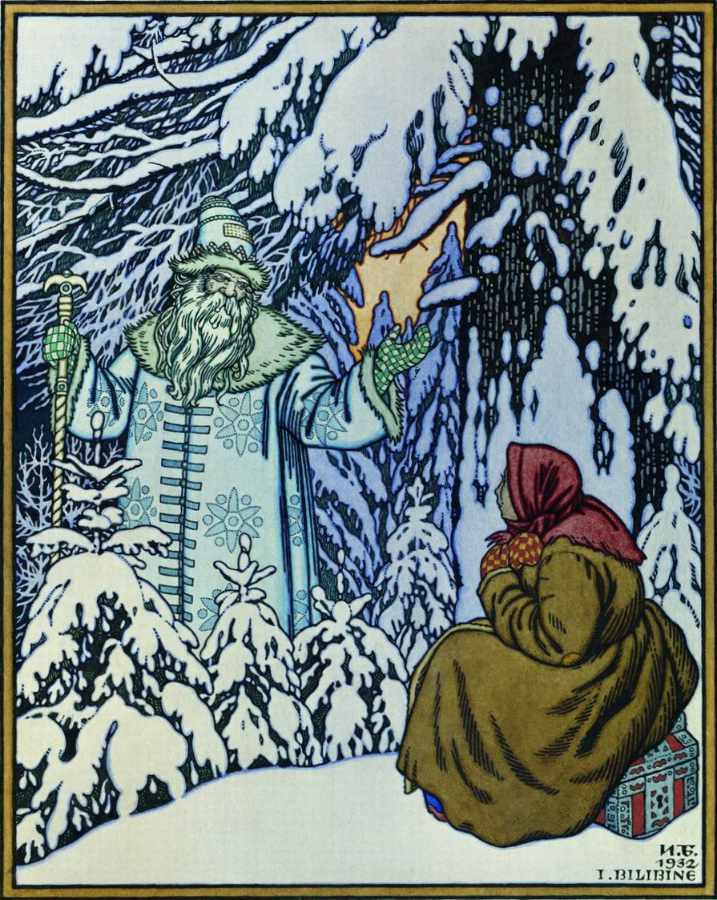Old Man Winter is a personification of winter. The name is a colloquialism for the winter season derived from ancient Greek mythology and Old World pagan beliefs evolving into modern characters in both literature and popular culture. He is usually depicted as an old man, most commonly blowing winter over the landscape with his breath, or simply freezing the landscape with his very presence. Humans have associated the winter season with deities since the ancient Greek god of winter Boreas, the Norse god of winter Ullr and continuing on in other cultures including Celtic mythology with the goddess Cailleach and goddess Beira. Over time, the old gods of winter changed to new humanizations of the seasons, including Old Man Winter. However, some cultures had a character clearly named “Old Man Winter”, where the name was not a shorthand for some other god or spirit. Among the Potawatomi people of the Western Great Lakes region, there exists a myth about Old Man Winter, called Pondese in their language. Old Man Winter was a character in Iroquois legends. There are countless references to this personification of winter throughout literature, music, games, cultural events and even in advertising.
| Alias Old Man Winter |
| Real Names/Alt Names Winter |
| Characteristics Personification, Myths & Legends, Time-themed, Prehuman Epoch |
| Creators/Key Contributors Unknown |
| First Appearance Greek mythology |
| First Publisher ○ |
| Appearance List Inspired by Boreas, God of the North Wind, in greek mythology, the goddess Skadi/Ullr in norse mythology, the slavic legend Morozko (“Father Frost”), later merged with Christmas imagery, and the Celtic Cailleach Bheur, the crone goddess of winter and storms. Alluded to in Washington Irving’s A Winter’s Day (early 1800s), 19th century farmers’ almanacs, poems, and seasonal writing, 20th century children’s stories, Christmas cartoons, and advertising. Comics: Atomic Mouse #46. |
| Sample Read The Metamorphoses of Ovid, Books I-VII [PG] |
| Description Old Man Winter is a personification of winter. The name is a colloquialism for the winter season derived from ancient Greek mythology and Old World pagan beliefs evolving into modern characters in both literature and popular culture. He is usually depicted as an old man, most commonly blowing winter over the landscape with his breath, or simply freezing the landscape with his very presence. Humans have associated the winter season with deities since the ancient Greek god of winter Boreas, the Norse god of winter Ullr and continuing on in other cultures including Celtic mythology with the goddess Cailleach and goddess Beira. Over time, the old gods of winter changed to new humanizations of the seasons, including Old Man Winter. However, some cultures had a character clearly named “Old Man Winter”, where the name was not a shorthand for some other god or spirit. Among the Potawatomi people of the Western Great Lakes region, there exists a myth about Old Man Winter, called Pondese in their language. Old Man Winter was a character in Iroquois legends. There are countless references to this personification of winter throughout literature, music, games, cultural events and even in advertising. |
| Source Old Man Winter – Wikipedia |

